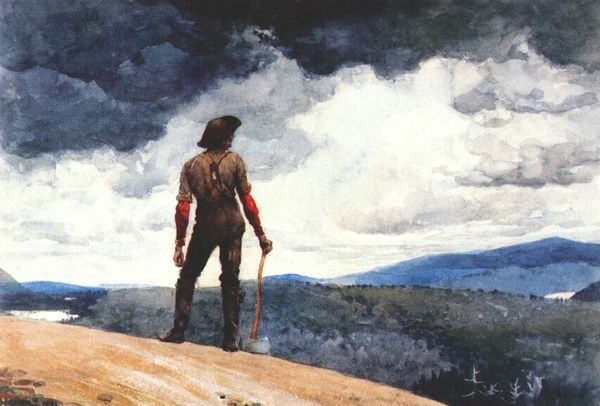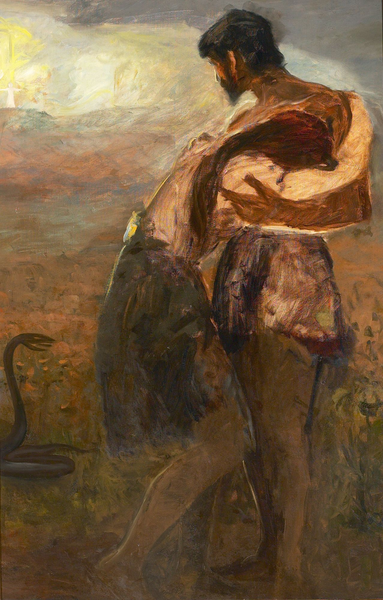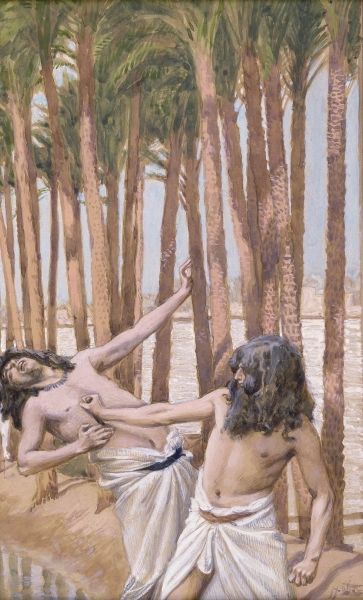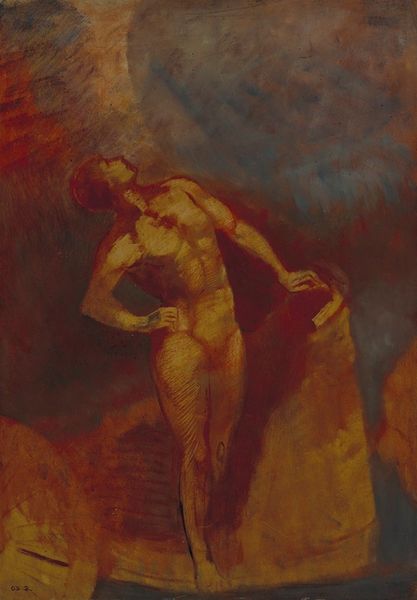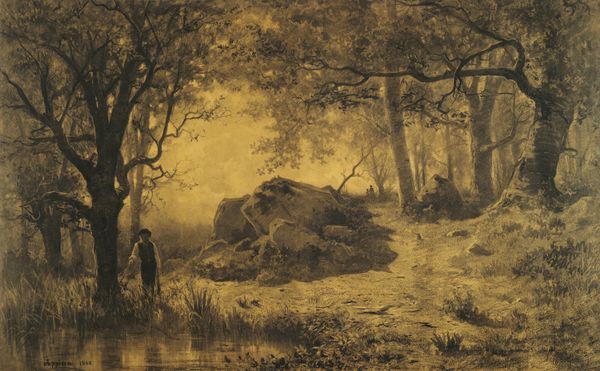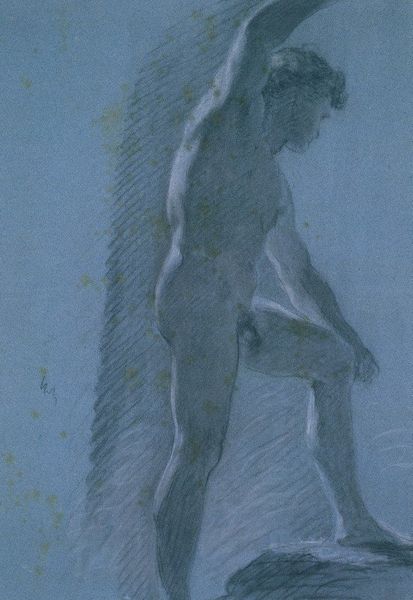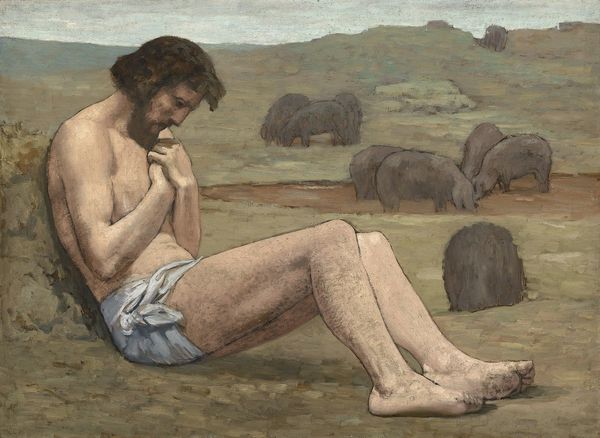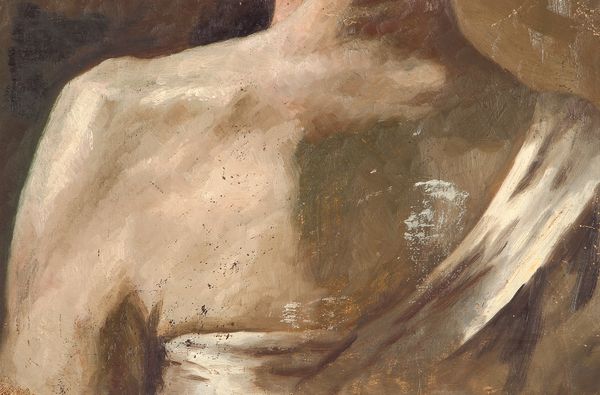
Kain Ved Sit Arbejde I Marken Efter at Have Ihjelslået Sin Broder Abel 1896
0:00
0:00
Copyright: Public domain
Editor: So, this is Hans Andersen Brendekilde's "Cain at Work in the Field After Slaying His Brother Abel," painted in 1896. The oil paint lends a certain weight to the subject matter, wouldn't you say? There's this feeling of utter isolation, like he's trapped within the landscape. What kind of reading does this image evoke for you? Curator: It is compelling. The depiction of Cain is striking for its vulnerability. The artist places a genre painting squarely within a religious, historical context. Consider the late 19th century, a period grappling with both religious faith and emerging social consciousness. This image offers a glimpse into the complex public debates surrounding morality and human nature. Do you see the connection between Cain’s nudity and the narrative? Editor: Hmm, I hadn’t thought of that explicitly. I suppose his nudity links him to this primordial state, like he's been stripped bare not only physically, but morally. It almost suggests innocence lost, although maybe innocence is too generous of a term, given his crime. But the historical setting – how does that affect the artwork’s message, exactly? Curator: Well, think of the institutions that promoted such work. Art academies and salons helped dictate what kind of history and moral lessons should be shown, often reflecting dominant social values. Brendekilde offers a nuanced narrative that perhaps subtly questions straightforward notions of guilt and punishment which can certainly be debated. Editor: I see, the artwork is taking on bigger, broader issues than it may immediately seem to address! Curator: Precisely! This historical lens allows us to decode the underlying socio-political dimensions embedded in a seemingly simple genre scene. Editor: I’ll never look at paintings the same way. This conversation has really changed how I understand not only this painting, but also the public and even political role art plays. Curator: And hopefully it has encouraged further reflection and a more critically engaged approach.
Comments
No comments
Be the first to comment and join the conversation on the ultimate creative platform.


